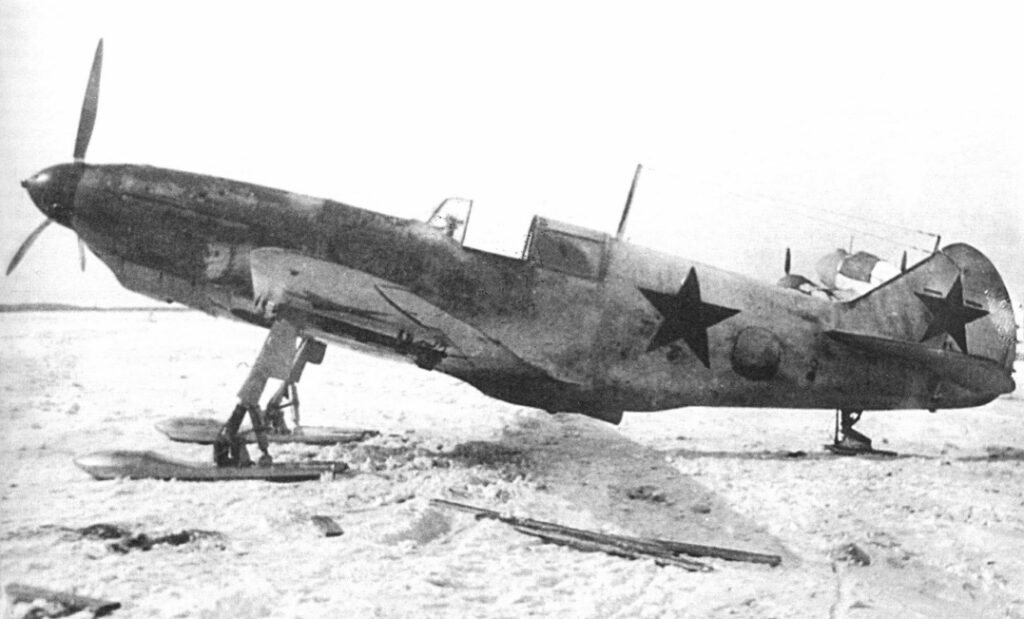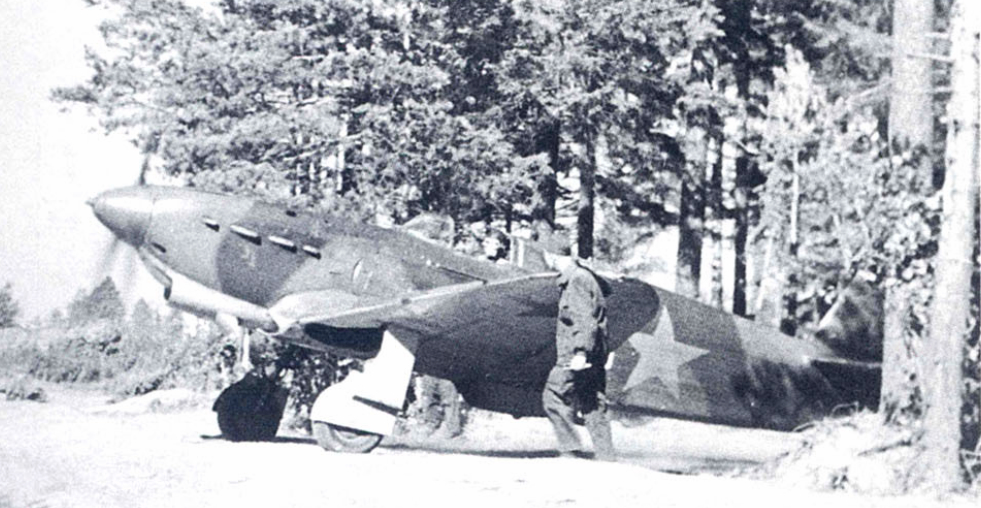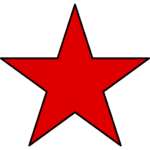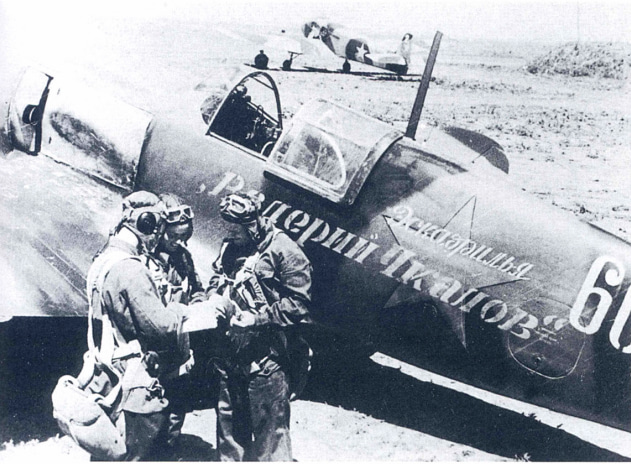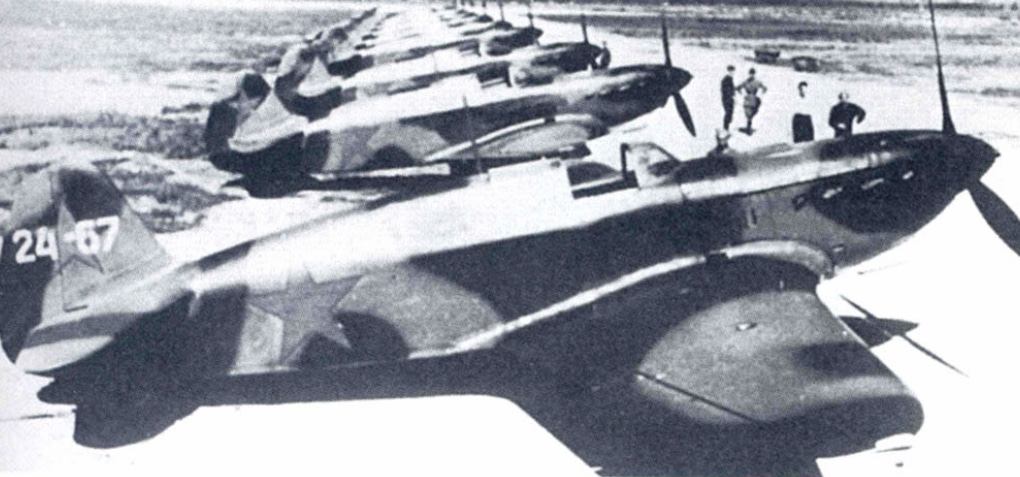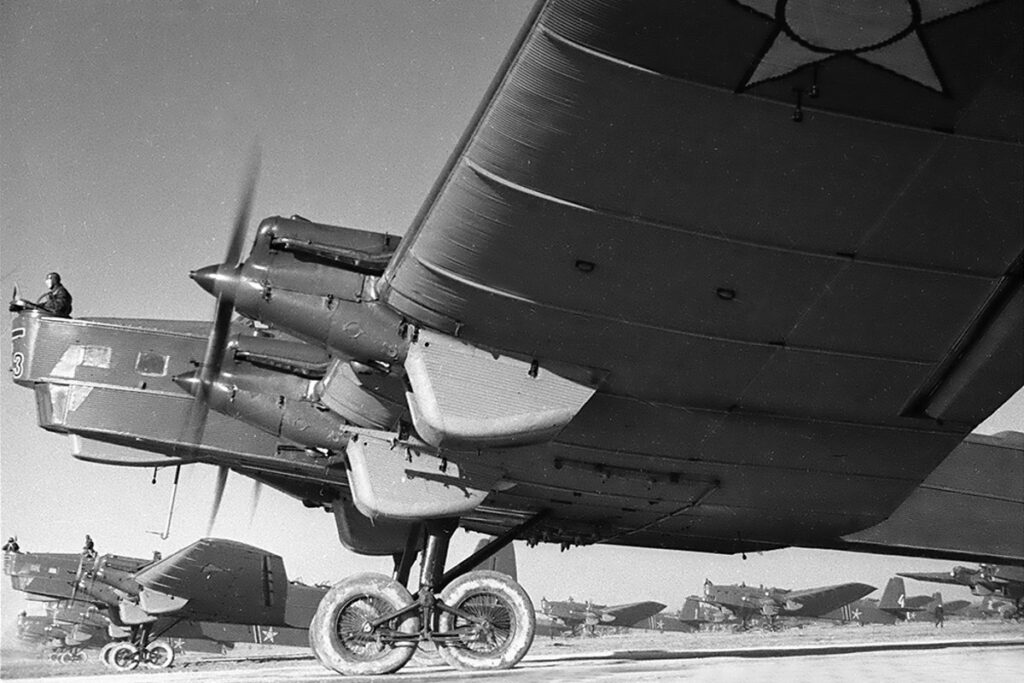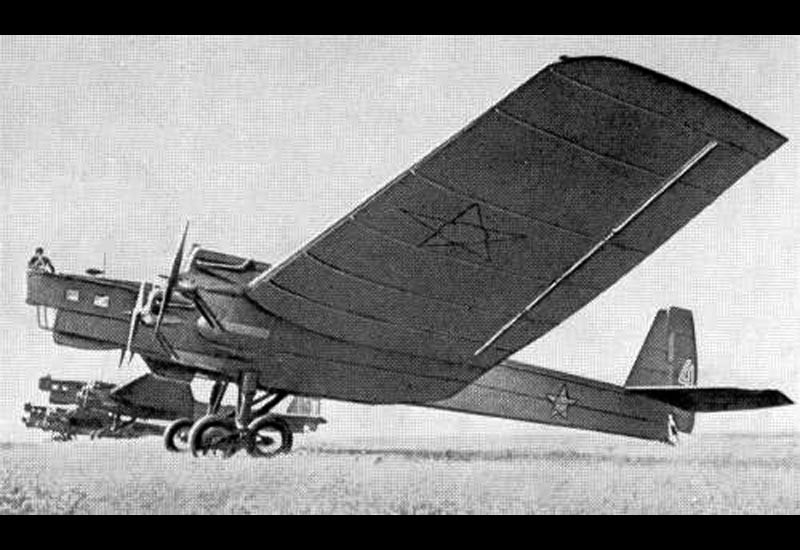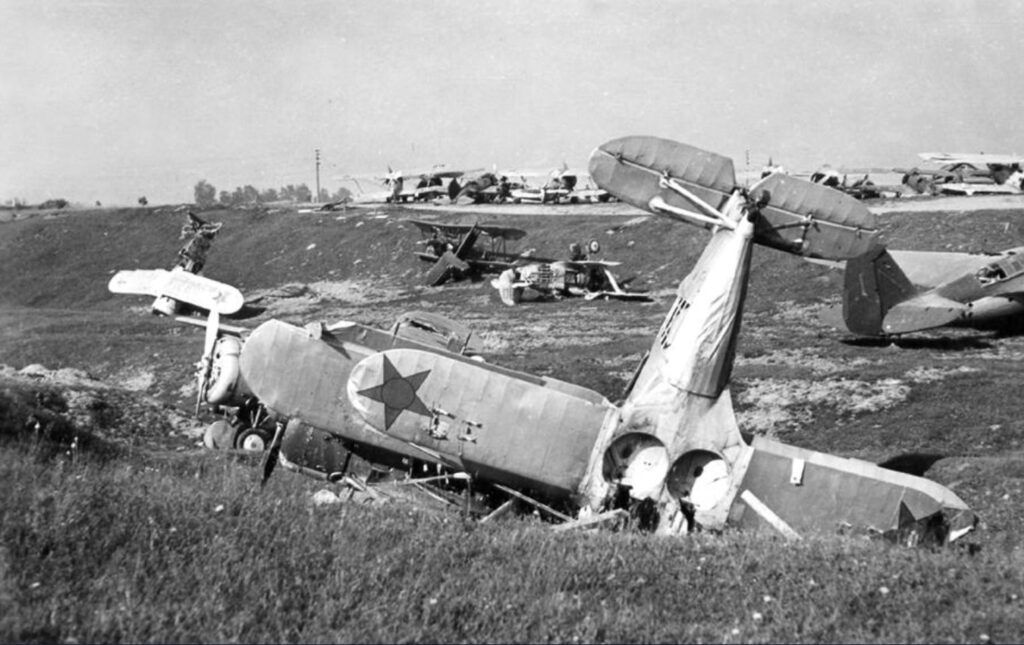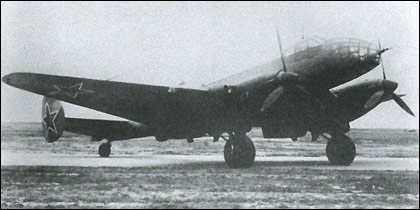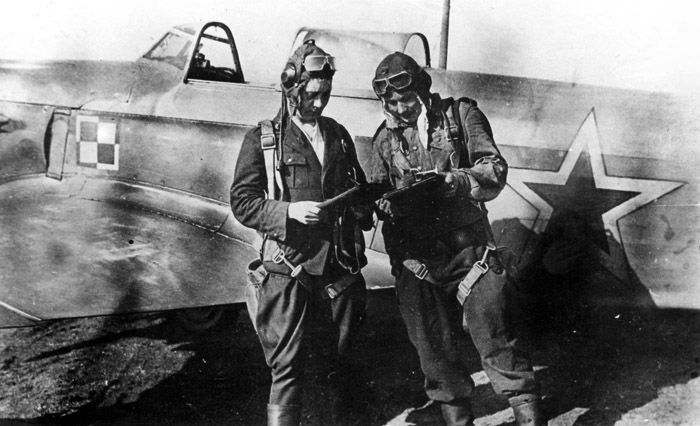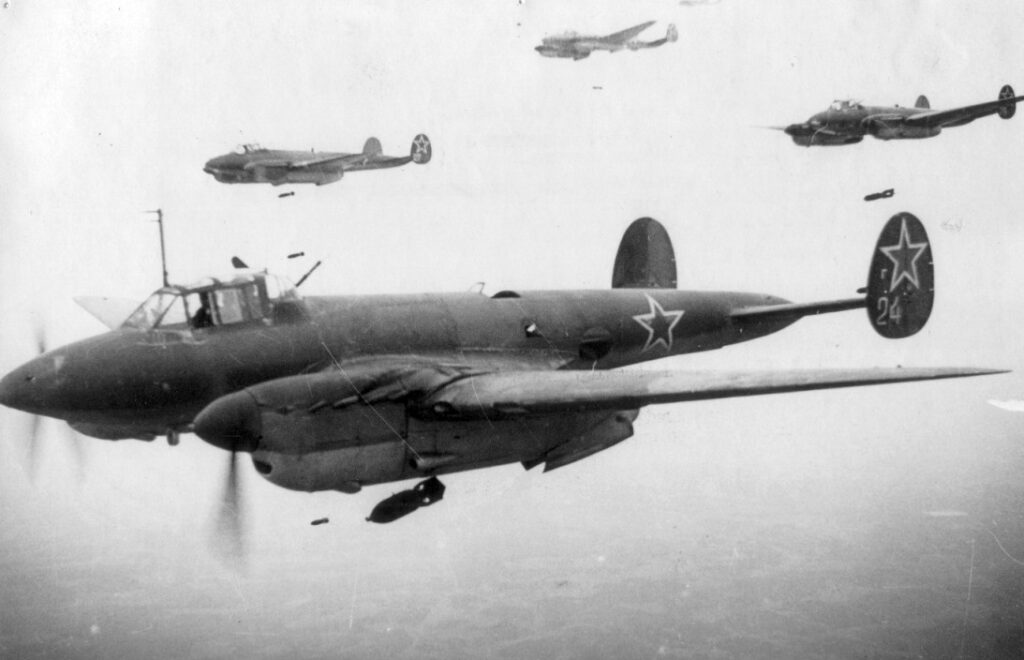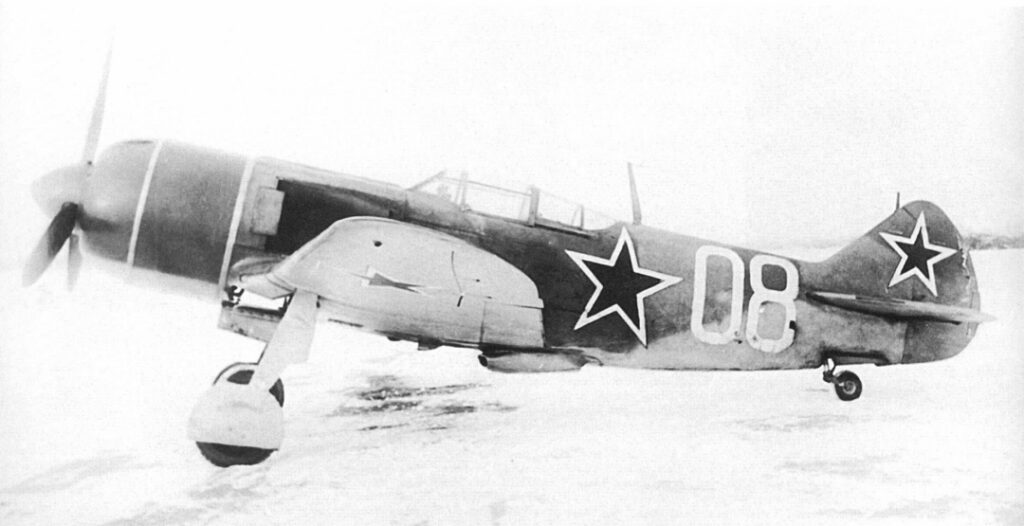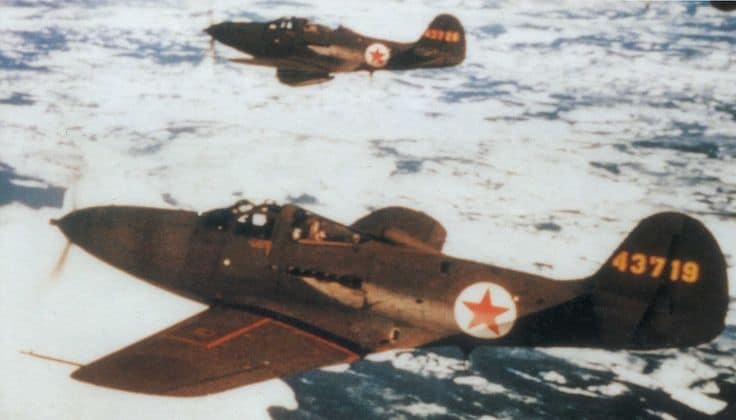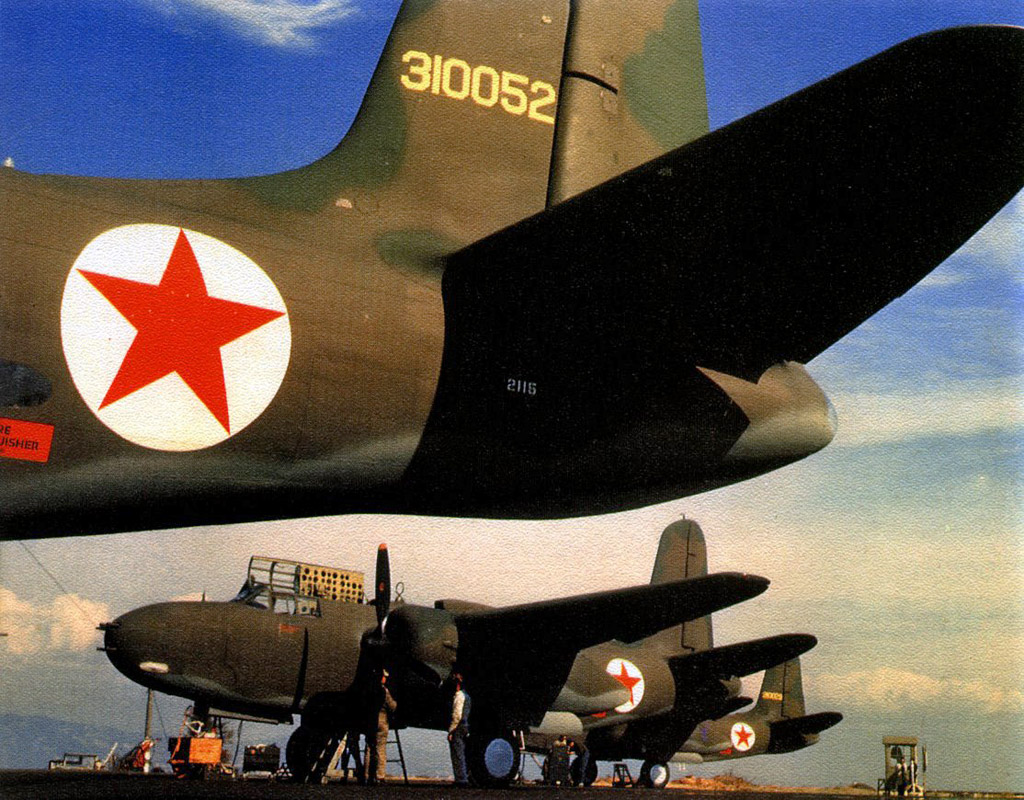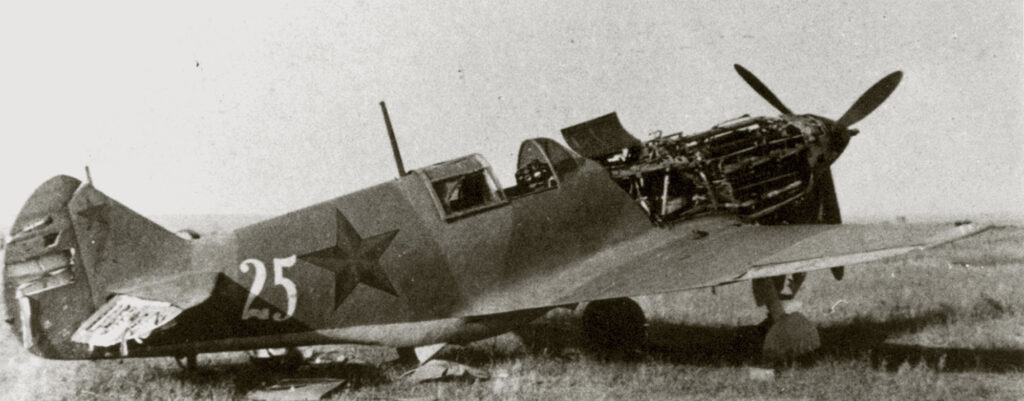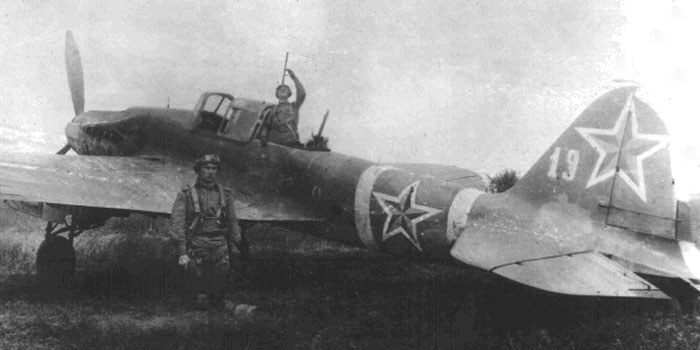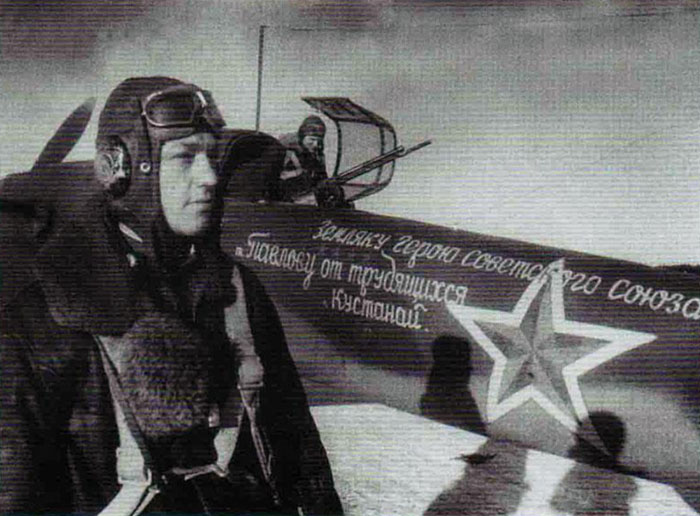On this page I’ve tried to create a comprehensive list of the paintings, camouflages and markings utilized by the VVS, the soviet air force in the period leading up to the second world war to a bit thereafter. It is based mostly around the research of Mikhail Orlov. Even though I’ve tried to create this list carefully, mistakes are possible.
The shown colours are an approximation. The exact colours are often difficult to determine, and could vary from factory to factory and fade over time. The displayed colour can also differ depending on the monitor used. The shown examples should only be regarded as general approximations.
Paints
Prior to second world war, or Great Patriotic War as the Soviets called it, a few old systems were still in use on older planes, namely “A”, “AEh” and “AE”. When the war broke out in June 1941 they were already abandoned for the AMT system.
Relevant Government Institutions
VVS: Военно-воздушные силы, Voyenno-Vozdushnye Sily. Lit Military Air Forces. Air force of the Soviet Union from 1918-1991.
NKAP: Narodniy Kommisariat Aviatsionoy Promishlinosti. Lit. People’s Commissariat for the Aviation Industry.
NIIIT: Scientific-Test Institute of Technical Engineering
UVVS Upravlenie Voyenno-Vozdushnikh Sili Directorate of the Air Force
AЭ-*
Аэроэмали [Aeroemali, Aircraft enamels] were aviations paints and varnishes on an oil enamel base to be used on metal surfaces.
AЭ [AE] colours were oil enamels for external use, and were resistant to atmospheric influences.
| Name | Colour | equivalents | Gunze | Tamiya | Vallejo | Hataka | MRP | AK | Ammo MIG |
| АЭ-7 [AE-7] | “zashchitnyi“ Green |
||||||||
| gloss. Overall colour early metal planes | |||||||||
| АЭ-8 [AE-8] | Aluminium | ||||||||
| Overall surface colour of some early bombers | |||||||||
| АЭ-9 [AE-9] | Light Gray | RC308 | |||||||
| The paint was designed for external duraluminium surfaces on aircraft, however it chalked in after a short period in open air conditions, and was quickly replaced with AE-8 on exterior surfaces. It was still used for internal surfaces. Officially introduced in January 1938, but could be used earlier according to emergency specifications. | |||||||||
| АЭ-10 [AE-10] | Dark Gray | ||||||||
| Underwater parts of wooden seaplanes | |||||||||
| АЭ-11 [AE-11] | Black | ||||||||
| backside of metal blades | |||||||||
| АЭ-14 [AE-14] | Light Blue | ||||||||
| internal surfaces of wooden water planes Underwater parts of wooden seaplanes |
|||||||||
A-* / A-*ф
In 1940 The Э disappears from the designation. An “ф” [f] could be placed behind the code to denote it was an alkyd paint instead and was alcohol soluble.
| Code | Colour | FS equivalent | Gunze | Tamiya | Vallejo | Hataka | MRP | AK | Ammo MIG |
| A-6 A-6ф [A-6f] |
Yellow | FS-13655 | 71.415 | HTK 074 | |||||
| Fuel systems, Propeller blade tips | |||||||||
| A-7 A-7ф [A-7f] |
Green | FS-14187 | |||||||
| Cooling systems | |||||||||
| A-8 A-8ф [A-8f] |
Dark Brown | 71.303 | |||||||
| Oil systems | |||||||||
| A-9 A-9ф [A-9f] |
Dark Blue | FS-15065 | 71.319 | ||||||
| Hydraulic systems | |||||||||
| A-10 A-10ф [A-10f] |
Light Blue | FS-15187 | |||||||
| oxygen systems | |||||||||
| A-12 A-12ф [A-12f] |
Black | ||||||||
| air systems, roundel outlines and other markings | |||||||||
| A-13 A-13ф [A-13f] |
Red | H-013 | |||||||
| fire systems, roundels outlines and other markings | |||||||||
| A-14 A-14ф [A-14f] |
Steel Grey | FS-26187 | HTK-*032 | MRP-021 | RC319 | ||||
| general interior colour | |||||||||
| A-18ф [A-18f] | Light Blue | RC311 | |||||||
| Alkyd enamel for undersurface camouflage | |||||||||
| A-19ф [A-19f] | Light Green | RC312 | |||||||
| Alkyd enamel for upper camouflage | |||||||||
AII *
The AII or A2 family were a series of nitro cellulose lacquers. They were quite durable and were fire retardant. While they had a shiny finish when new, this quickly became satin to matt under influence of the elements. The lacquer also didn’t adhere very well to untreated surfaces and a coating of primer under the lacquer was recommended.
The name comes from Аэролаки [Aerolaki, Aerolacs or aircraft dopes] and the Roman numeral II, indicating they were for the 2nd coat. As opposed to AIH [AIN], which were transparent lacquers used for the first coating.
an (п) [p] or an (к) [k] was placed behind AII to indicate the paint was optimized for brush or airbrush respectively (AII(п)). The only difference was the viscosity. Example,
Please note that research to these colours is still ongoing. A multiple of different names is also used for this series in different documents, such as ‘tobacco’, orange’ and ‘cream’. Also the shortening of the official nomenclature is all over the place
| Official name | Alternative names | FS equivalent | Gunze | Tamiya | Vallejo | Hataka | MRP | AK | Ammo MIG |
| АII светло-голубой [AII svetlo-goluboy] |
AII св.Гол [AII Sv.gol.] AII Г [AII G] AII Light blue |
FS-25466 to FS-35550 | 71317 | RC310 | MRP-024 | ||||
| undersurface of mixed construction planes very brilliant colour, however shine fades fast |
|||||||||
| АII светло-коричневый [AII svetlo-koričnevyj} |
sand brown southern brown light brown AII-Cream |
FS-10260 to FS-30480 | RC308 | ||||||
| upper surface camouflage | |||||||||
| А II темно-зеленый | AII dark green | FS-00401 | |||||||
| upper surface camouflage | |||||||||
| А II алюминий [AII Aluminium] |
AII ал [AII Al.] | ||||||||
| Numbers and Other marks | |||||||||
| AII белый [AII belyj] |
AII White | ||||||||
| Used for the star insignia and markings | |||||||||
| АII красный [AII krasnyy] |
AII кр [AII Kr] AII Red |
MRP-025 | |||||||
| Used for the star insignia | |||||||||
| АII светло серый [AII svetlo seryi] |
АII св.сер [AII Sv.serv.] AII light grey |
FS-25466 to FS-35550 | 71.317 | ||||||
| Overall surface of some pre/early war planes. Introduced 1937. | |||||||||
| AII Защитныи [AII Zashchitnyi] |
AII З [AII Z] AII protective AII Light green |
FS-24258 to FS-34151 | 71410 | RC309 | MRP-023 | ||||
| undersurface of mixed construction planes very brilliant colour, however shine fades fast. While the colour is very well known trough large amounts of physical evidence, the official name of this colour is still debated. The most commonly used are “green” and “Zashchitnyi”, meaning protective. The NIIIT referred to this colour as “AII Yellow-Green” and the VIAM as “Light green”. Introduced 1940. It’s sometimes incorrectly called AII 3 (number three) instead of AII З (cyrillic letter /ze/). |
|||||||||
| АII таб [AII Tab] |
коричневый [korichnevyy] orchre brown red red-brown earth-brown AII-tobacco? |
FS-10111 to FS-30206 | |||||||
| upper surface camouflage. Introduced 1940. No information about actual production or usage hasn’t been found yet |
|||||||||
| АII черный [AII černyj] |
AII black black-green |
FS-17038 | |||||||
| upper surface camouflage | |||||||||
Sv. zel (light green)
Sv. Or (Orange)
AMT-* / AGT-*
End 1941, a series of specifications for a new series of aviation finishings was drawn up known as ‘AMT’, or aerolak Matoviy for use on mixed construction aircraft. They were on a Nitrocellulose base. These were ordered together with the A-**m series for all metal aircraft, however these paints were introduced much later. Due to large shortages and the harsh winter of 1941, the introduction of these new lacquers happened only gradually, and pre-war finishes were used up to 1945, sometimes together with the new lacquers.
The primary reason for these new paints was that they could be applied without a primer and were much more durable.
The delivery of the first three colours, AMT-6 Black, AMT-4 Green and AMT-7 Blue began begin 1942 to LaGG and Yak fighter programs. These were manufactured using the same pigments as their AII counterparts and only later new colours were introduced, which also bore a close resemblance to earlier finishes.
AGT paints were the glossy equivalents of the matte AMT line.
| Code | Name | FS equivalent | Gunze | Tamiya | Vallejo | Hataka | MRP | AK | Ammo MIG |
| AMT-1 AGT-1 |
Light Brown | FS *0372 | H-072 C-022 |
71320 | MRP-015 | RC313 | 252 | ||
| Upper surface camouflage of all aircraft types except fighters together with AMT-4 and AMT-12. Fades to a darker shade. | |||||||||
| AMT-4 AGT-4 |
Green | FS-*4151 | H-303 C-303 |
71301 | HTK-*073 | MRP-016 | AK11915 RC315 AK2242 |
080 | |
| Upper surface camouflage | |||||||||
| AMT-6 AGT-6 |
Black | FS-*7038 | H-077 C-137 |
XF-69 | 71251 | HTK-*041 | MRP-017 | AK2243 | 046 |
| Upper surface camouflage propeller blades |
|||||||||
| AMT-7 AGT-7 |
blue | FS-*5190 | H-323 C-323 |
85% XF-23 5% XF-4 10% XF-2 |
71318 | HTK-*072 | MRP-018 | AK11916 RC316 AK2244 |
251 |
| Undersurface of planes. | |||||||||
| AMT-11 AGT-11 |
Blue Grey | FS-*6375 | H-331 C-331 |
71304 | HTK-*071 | MRP-019 | AK11917 RC317 AK2245 |
||
| Upper surface camouflage together with AMT-12 | |||||||||
| AMT-12 AGT-12 |
Dark Grey | FS-*6187 | H-337 C-317 |
XF-54 | 71308 | HTK-*070 | MRP-020 | AK2246 RC318 AK2246 |
253 |
| Upper surface camouflage together with AMT-11 | |||||||||
A-**m / A-**g
The A**-m/g were a family of alkyd enamel paints. They were ordered in 1941 alongside the AMT paints. Delivery started early 1942 but no evidence exists of their usage until fall 1943.
The paint weighted less then the AMT line, but less robust and didn’t stick very well to wood and was therefore restricted to metal surfaces.
Note that these paints, while they bore the same naming as the earlier A-* colours, are distinct paints.
A-**g paints were the glossy equivalents of the matte A-**m line.
| Code | Name | FS equivalent | Gunze | Tamiya | Vallejo | Hataka | MRP | AK | Ammo MIG |
| A-21m A-21g |
Brown | FS-36350 | H-072 C-022 |
71415 | HTK-*074 | MRP-022 | RC314 | 252 | |
| Upper surface camouflage of all aircraft types except fighters together with A-24m and A-32m | |||||||||
| A-24m A-24g |
Green “protective” |
FS-34098 | H-303 C-303 |
71303 | HTK-*073 | MRP-016 | AK11915 RC315 AK2242 |
080 | |
| Upper surface camouflage of all aircraft types except fighters together with A-21m and A-32m | |||||||||
| A-26m A-26g |
black | FS-37038 | |||||||
| While ordered, no evidence exists of it’s usage and no samples are known. It is possible that this paint was used for propellers, as described by Album Vozdushnyikh Vintov from 1943 | |||||||||
| A-28m A-28g |
blue | FS-25138 | H-067 C-115 |
71319 | |||||
| No evidence exists of the usage of A-28m during the second world war, as all airframes painted with A-**m upper surfaces still use AMT-7 for the underside. The usage is confirmed from 1948 onward. | |||||||||
| A-32m A-32g |
Black-Grey | FS-36251 | H-331 C-331 |
||||||
| Upper surface camouflage of all aircraft types except fighters together with A-21m and A-24m Upper surface camouflage of fighter aircraft together with A-33m |
|||||||||
| A-33m A-33g |
Grey-Blue | FS-36251 | |||||||
| Upper surface camouflage of fighter aircraft together with A-32m | |||||||||
Primers
These were a series of matte, multi purpose surface primers, which were painted over by regular camouflage schemes.
| Code | Colour | FS equivalent | Gunze | Tamiya | Vallejo | Hataka |
| АЛГ-1 [ALG-1] |
Zinc-chrome yellow |
|||||
| Oil based primer for aluminium and magnesium alloys. The shade wasn’t standardized and could range from light yellow to chromate green. Unlike other primers, ALG-1 was usually covered by other paints. | ||||||
| АЛГ-5 [ALG-5] |
Green | |||||
| mix of 50/50 ALG-1 and A-14. After 1943 this was recommended by the NKAP as the standard cockpit finish. The shade varied based on the colour of the ALG-1 used. | ||||||
| n.138 | red brown | |||||
| glyptal primer | ||||||
| “IMUP” | Blue Grey | |||||
| Industrial Metal Use Primer. The official designation of this primer is unknown. Found commonly on steel and duraluminium surfaces. IMUP Is not an aviation lacquer, and was widely used in Soviet manufacturing. | ||||||
Washes
| Code | Colour | FS equivalent | Gunze | Tamiya | Vallejo | Hataka |
| MK-6 MK-6ф [MK-6f] |
Black | |||||
| black wash for under surface of night bombers, removable. F variant was alcohol soluble | ||||||
| MK-7 MK-7ф [MK-7f] MK-7Ш [MK-7Sh] |
White | |||||
| MK-7 was developed as a cheap paint that could easily be applied and removed on the front lines, was safe to handle by ground crew and was workable under very low temperatures. It consisted of a paste of chalk and 0.1%-0.2% aquamarine and a bonding agent made of casein glue. It was water and kerosene soluble, the latter only recommended for low temperatures. It gave a nice matte white surface. It was also indistinguishable from snow in the ultraviolet colour spectrum. The wash became available early 1942 and was pushed to field units and factories and was used with great vigour. However this paint was, remarkably for the VVS, never tested, and impacted the flight performance of aircraft significantly due to its drag inducing rough surface. Depending on the size of the chalk, a speed loss of 10-25 km/h was achieved. It was also discovered that the wash didn’t adhere very well to AII-x lacquers, resulting in the wash being almost gone near the end of the winter. For these reasons a new variant was developed for the winter ’42-’43. MK-7f with an alcohol solvent and MK-7sh, which was said to be similar to plaster. However the usage of MK-7 gave considerable drag on airframes, and no variant managed to remove this, and these new variants were only deployed at select factories. During the winter the usage of MK-7 greatly reduced. Many fighter pilots refused to use MK-7, preferring performance of stealth. Some choose to apply it to select parts of the plane, making a compromise between performance and camouflage. Bombers kept using the wash more as concealment was more important than performance, however bomber crews also opted for half-white winter schemes often. By the winter of ’43-’44, nothing was left of the original enthusiasm for MK-7, and only a small group of bombers choose to use the wash. |
||||||
| АБ-1 [AB-1] | White | |||||
| Alternative for MK-7 based on gypsum. In terms of handling, AB-1 was very similar to MK-7, and even closer to snow in terms of camouflage. While used on Sukhoi Su-2 aircraft from Factory No. 135 in the Ural mountains, it wasn’t really used much elsewhere. | ||||||
| С-1 [S-1] | White | |||||
| Due to chalk shortages, alternatives for MK-7 were tested, S-1 being on alabaster basis. | ||||||
| С-4 [S-4] | White | |||||
| Due to chalk shortages, alternatives for MK-7 were tested, S-4 being on lime basis. | ||||||
| В [V] | White | |||||
| Due to chalk shortages, alternatives for MK-7 were tested, V being on gypsum basis. | ||||||
| MK-8 | black | |||||
| undersurface of night bombers, permanent | ||||||
| “Noch” ночь |
black | |||||
| Lit. night. | ||||||
Other paints:
lacquer No.67 asfaltoviy. Bombs were painted twice, first normally with the markings and then with asfatoviy, a dark grey , slightly sticky lacquer which was easily removed with turpentine, presumably to check the markings.
Roundels
Plain Red Star
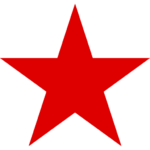 |
The emblem started as a plain, red star which can be seen from the early 1920’s onward. The exact origin of the red star is unknown, but the star has always been used in one way or another as the roundel of the Soviet air force. The plain star was used commonly to 1942, but began to disappear in 1943 and was rarely seen after that.
Circle Star
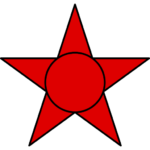 |
This variant was became popular during the 1920’s and 30’s, and was occasionally seen in the early periods of the war on planes manufactured in 1937-1939.
White/Yellow Bordered Star
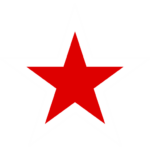 |
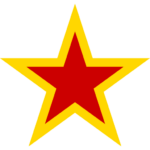 |
Initially the border of the white line was quite thin, comparable to the black bordered star. By 1942 the border became gradually thicker over the years. Some examples of this variant are known from before the war, but it didn’t become popular until 1942.
The yellow bordered star seem to have been used as a decorative substitute for the white bordered star between 1942-1945. It was likely based on the Red Army flag, but never gained much popularity and stayed quite rare.
Victory Star
 |
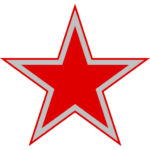 |
The term Victory star was coined in the 1950’s. Before that this star was also known as the outline star. It was officially introduced in August 1943. In 1945 this variant had become the de facto standard and replaced all other variants.
A Silver bordered victory star variant was also known to be used as a decorative substitute.
Transit Star
 |
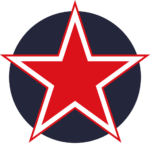 |
During the war, the USSR received a lot of US aircraft via the Lend-Lease program. These aircraft had American roundels painted on them during production. When these aircraft were shipped to the Soviet Union, the Soviet star was painted on them, either before or after ferrying.
The blue outer part was most of the time repainted in the same colour as the surrounding camouflage. But due to availability and different green hues used by the Soviets results varied, often resulting in a very visible, green outline of the old roundel.
However sometimes it was either left blue or it was painted white. The style and size of the interior star could differ per plane.
Kremlin Star
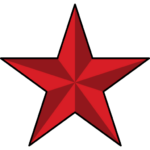 |
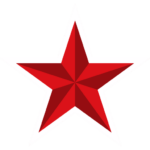 |
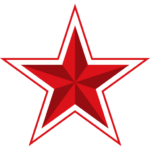 |
The Kremlin star was a more fancy variant with a 3D style red star. It wasn’t used a whole lot but it might have been used as a substitute roundels for military parades and as a personal field modification. It was mostly encountered on IL-2 planes.
Sources
- E. Pilawskii, Soviet Air Force Fighter Colours 1941-1945. Classic Publications (2004). ISBN 978-1903223307
- M Góralczyk, G. Högl, J. Kiroff, N. Millman, M. Orlov, Real Colors of WWII Aircraft. AK-interactive (2019) ISBN 8435568300385
- http://wio.ru/simbols/simbrus.htm, accessed 23-04-2021
- https://massimotessitori.altervista.org/sovietwarplanes/pages/lendlease/p-39/p-39.html, accessed 23-4-2021
- https://massimotessitori.altervista.org/sovietwarplanes/pages/colors/mark-colors/mark-colors.html accessed 16-02-2022
